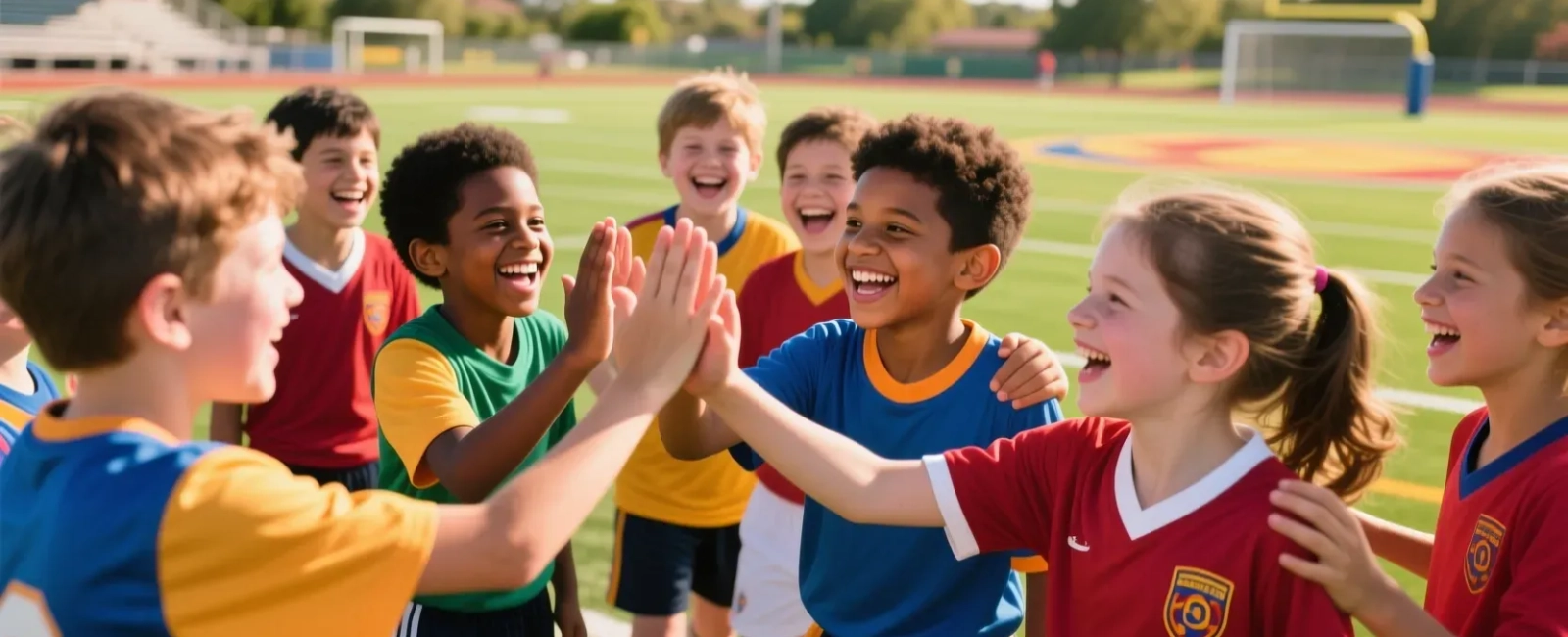Transforming Youth Sports: Embracing Mistakes Over Winning

Ever had that feeling in the pit of your stomach when your kid makes an error that costs a game? Or watched their face just crumple after a strikeout? We’ve all been there. We want them to win, sure, but what if our obsession with the scoreboard is actually costing them something much more valuable?
For years, the script has been pretty simple: practice hard, play to win, and mistakes are things you need to eliminate. But what if we’ve got the entire playbook upside down? What if the errors, the flubs, and the outright failures aren’t the enemy, but the entire point of the exercise?
The Scoreboard is Lying to You
We focus on wins and losses because they’re simple. They give us a clear, tidy number to measure a day’s work. But that number is a complete fabrication when it comes to measuring what a child is actually getting out of the experience. One study pointed out that for teenagers dealing with tough situations, being part of a team where they felt accepted was a powerful shield against feeling hopeless. It wasn’t their win-loss record that mattered; it was the feeling of being part of something, of having a place where they belonged.
Think about that for a second. The social fabric of the team—the inside jokes, the high-fives, the collective groan after a close call—that’s the real magic. That’s what builds the kind of inner strength that doesn’t disappear when the season ends. When we yell instructions from the bleachers or grill them about a loss on the car ride home, we’re accidentally tearing that fabric. We’re telling them, without saying the words, that the final score is more important than the shared struggle. We’re trading their long-term resilience for a short-term, largely meaningless, number.
Stop Being a Director and Start Being a Guide
This is where the real, difficult work for us comes in. Our natural instinct is to manage. To correct. To make sure they’re doing it right. But a fascinating piece of research flipped the script on a common assumption. It found that resilience actually builds optimism, not the other way around. How does a kid build that resilience? It happens when coaches (and yes, parents) create an “autonomy-supportive” environment.
That’s a jargony way of saying we need to stop being the conductor of the orchestra and start being the guide who points out the cool echoes in the concert hall. It means asking questions instead of giving commands. “What did you see when you were up to bat?” works a whole lot better than “You have to stop swinging at high pitches!” It means giving them ownership over their own learning. Let them decide if they want to work on their fastball or their change-up at practice. Let them figure out how to adjust their stance.
When a kid feels like they have some control, that their ideas are valued, they stop playing to avoid a lecture and start playing to explore what they’re capable of. And when they inevitably mess up, they’re more likely to see it as a data point for their own experiment, rather than a personal failure that disappoints the adults. This is how a tough strikeout transforms from a tragedy into a puzzle they want to solve.
The Toolkit is More Than a Glove and Cleats
We make sure our kids have the right gear. We buy them the pricey bat, the perfect cleats, the high-quality glove. But we often send them onto the field without any of the psychological equipment they need to handle the game. We expect them to just figure out how to deal with pressure, frustration, and disappointment.
The third study I looked at was blunt about this. It listed skills like goal setting, controlling self-talk, and using imagery as being just as critical as any physical drill. These aren’t soft skills; they’re the hard, practical tools of the trade. Are we teaching them how to take a deep breath and reset after a bad play? Are we helping them break down a big, scary goal (“I want to be a good pitcher”) into tiny, manageable steps (“Let’s just work on consistently hitting the catcher’s target this inning”)?
This is the actionable stuff. At home, you can work on this. After a rough game, instead of dissecting the errors, ask: “What’s one thing you did today that you’re proud of, even if it’s small?” You’re teaching them to look for the bright spots. If they’re nervous before a game, have them practice painting a mental picture of themselves succeeding—a crisp throw, a solid hit. This isn’t silly; it’s priming their brain for the real thing. You’re building their mental bench strength, so when the game is on the line, they have something to draw from besides pure panic.
The goal isn’t to raise a squad of all-star athletes. Let’s be real, the odds of that are minuscule. The goal is to use this incredible, messy, and emotional world of youth sports to build a person who knows how to get knocked down and get back up. A person who can look a challenge in the eye and not flinch. That ability—forged in the fires of dropped fly balls and missed tackles—is what they’ll carry with them long after the last trophy has tarnished. And honestly, that’s a win that actually counts for something.
